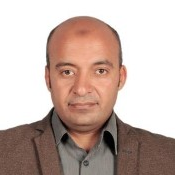Blue Revolution and Aquatic Life
A special issue of Life (ISSN 2075-1729). This special issue belongs to the section "Diversity and Ecology".
Deadline for manuscript submissions: closed (31 December 2022) | Viewed by 25572
Special Issue Editors
Interests: aquatic organisms; IMTA; aqua-feed additives; algae culture; algae biomass; phycology; aquatic physiology; water ecosystems; aquaculture water treatments
Special Issues, Collections and Topics in MDPI journals
Interests: aquaculture; fish physiology; immunology; physiology of stress; nutrition physiology; feed additives; reproduction
Special Issues, Collections and Topics in MDPI journals
Interests: fish; microbial ecology; lipid nutrition; electron microscopy; gut microbiota
Special Issues, Collections and Topics in MDPI journals
Special Issue Information
Dear Colleagues,
Recently, the aquaculture industry has grown rapidly with the realization that aquaculture products are renewable, sustainable, and beneficial to human nutrition and overall health status. Globally, aquaculture organisms are mainly divided into two large divisions, aquatic animals (finfish, crustaceans, and mollusks) and aquatic plants (microalgae and seaweed). The culture technologies of each division may be established separately, while some technologies have co-integration systems. Generally, algal cells are strongly utilized and may be applied during all stages of aquaculture activities of aquatic animals. Due to the global population explosion and climate change, the sustainable development of aquatic integration systems is a critical issue in achieving the blue revolution. The integration between aquatic animals and aquatic plants may be outright during early larvae rearing, on-growing, and/or mass production. This integration aims to achieve better direct and indirect nutrition, lower stress levels, improve environmental impact, and enhance anti-bacterial and antioxidant capacities. As a result, this integration can lead to lower production costs, high efficiency, and serve as a future for sustainable aquaculture industry projects. On the other hand, algal cells have significant application roles in several sustainable bio-industries.
In the perspective of the Blue Revolution, the current Special Issue concerns the integration of generations of aquatic plants and aquatic animals and the aquaculture products resulting from these generations. For this objective, we welcome the submission of high-quality research articles, review articles, and short communications that provide recent insights into the several aspects of the Blue Revolution, such as, but not limited to, integration of generations of aquatic organisms, sustainable development of aquatic organisms, immunity of aquatic animals, IMTA, PBR, RAS, aquaponic systems, treatment of aquaculture effluent, seaweed/microalgae co-culture, fish/shrimp/mollusks/seaweed co-cultures, and algal cell extracts and products.
Dr. Mohamed Ashour
Dr. Abdallah Tageldein Mansour
Prof. Dr. Einar Ringø
Guest Editors
Manuscript Submission Information
Manuscripts should be submitted online at www.mdpi.com by registering and logging in to this website. Once you are registered, click here to go to the submission form. Manuscripts can be submitted until the deadline. All submissions that pass pre-check are peer-reviewed. Accepted papers will be published continuously in the journal (as soon as accepted) and will be listed together on the special issue website. Research articles, review articles as well as short communications are invited. For planned papers, a title and short abstract (about 100 words) can be sent to the Editorial Office for announcement on this website.
Submitted manuscripts should not have been published previously, nor be under consideration for publication elsewhere (except conference proceedings papers). All manuscripts are thoroughly refereed through a single-blind peer-review process. A guide for authors and other relevant information for submission of manuscripts is available on the Instructions for Authors page. Life is an international peer-reviewed open access monthly journal published by MDPI.
Please visit the Instructions for Authors page before submitting a manuscript. The Article Processing Charge (APC) for publication in this open access journal is 2600 CHF (Swiss Francs). Submitted papers should be well formatted and use good English. Authors may use MDPI's English editing service prior to publication or during author revisions.
Keywords
- live feeds
- green water technique
- algae culture
- algae biomass concentrates
- Photobioreactors (PBR)
- seaweeds culture Techniques
- Integrated multi-trophic aquaculture (IMTA)
- aquaponic systems
- aqua-feed additives
- aquatic plants extracts/phytochemicals/products
- aquaculture water conditioner
- aquaculture water treatments








